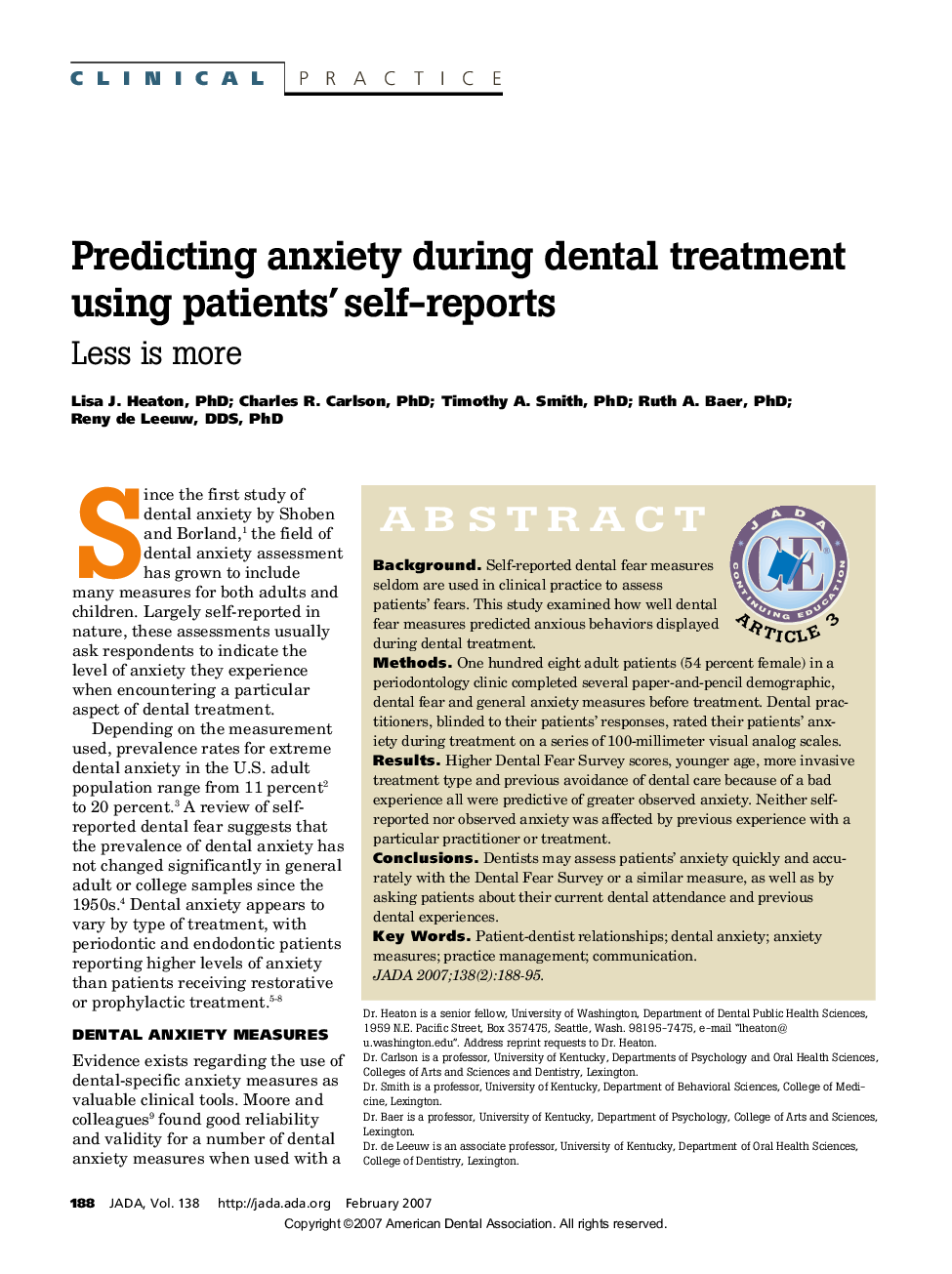| Article ID | Journal | Published Year | Pages | File Type |
|---|---|---|---|---|
| 3140536 | The Journal of the American Dental Association | 2007 | 8 Pages |
ABSTRACT BackgroundSelf-reported dental fear measures seldom are used in clinical practice to assess patients' fears. This study examined how well dental fear measures predicted anxious behaviors displayed during dental treatment.MethodsOne hundred eight adult patients (54 percent female) in a periodontology clinic completed several paper-and-pencil demographic, dental fear and general anxiety measures before treatment. Dental practitioners, blinded to their patients' responses, rated their patients' anxiety during treatment on a series of 100-millimeter visual analog scales.ResultsHigher Dental Fear Survey scores, younger age, more invasive treatment type and previous avoidance of dental care because of a bad experience all were predictive of greater observed anxiety. Neither self-reported nor observed anxiety was affected by previous experience with a particular practitioner or treatment.ConclusionsDentists may assess patients' anxiety quickly and accurately with the Dental Fear Survey or a similar measure, as well as by asking patients about their current dental attendance and previous dental experiences.
